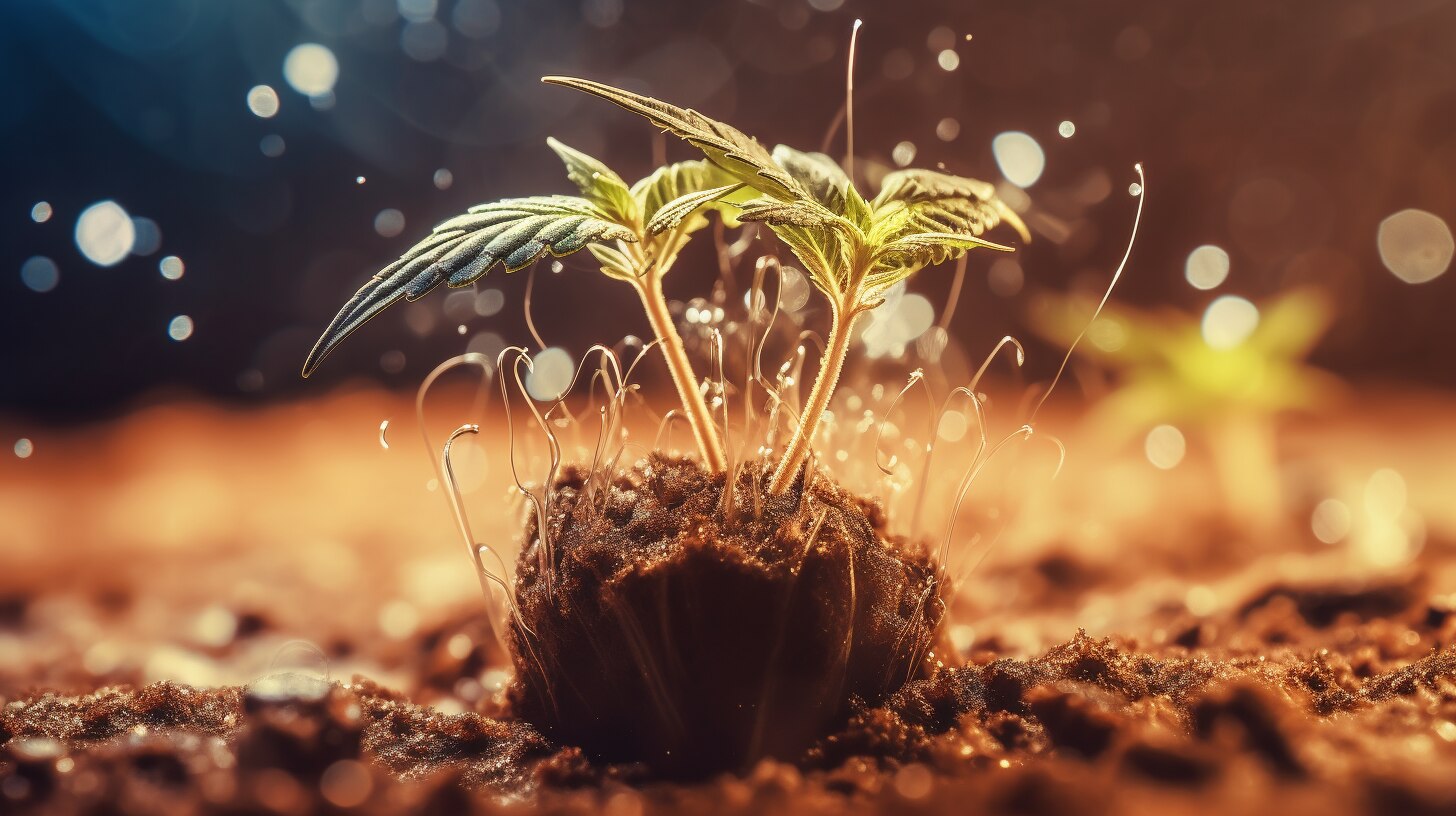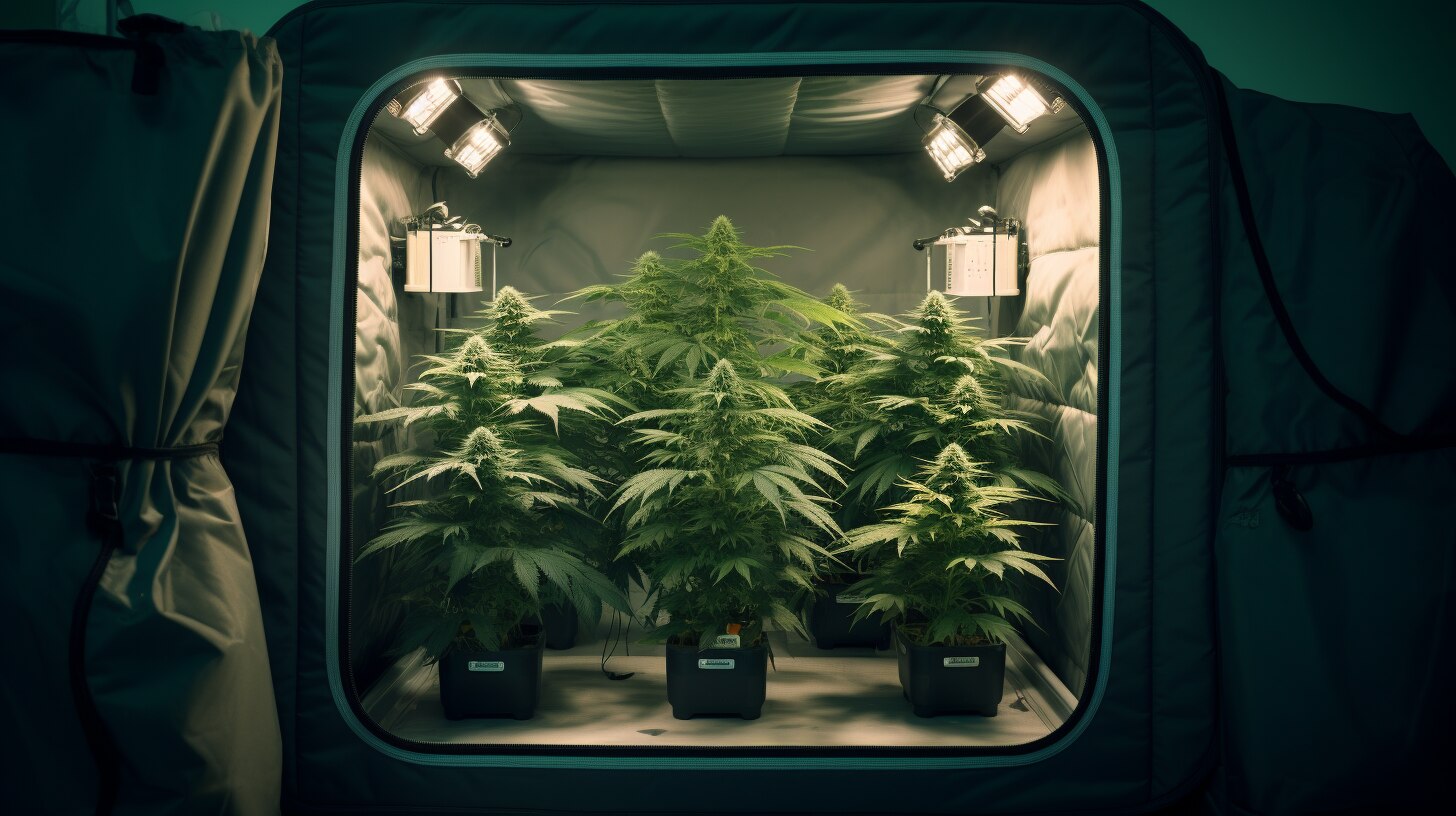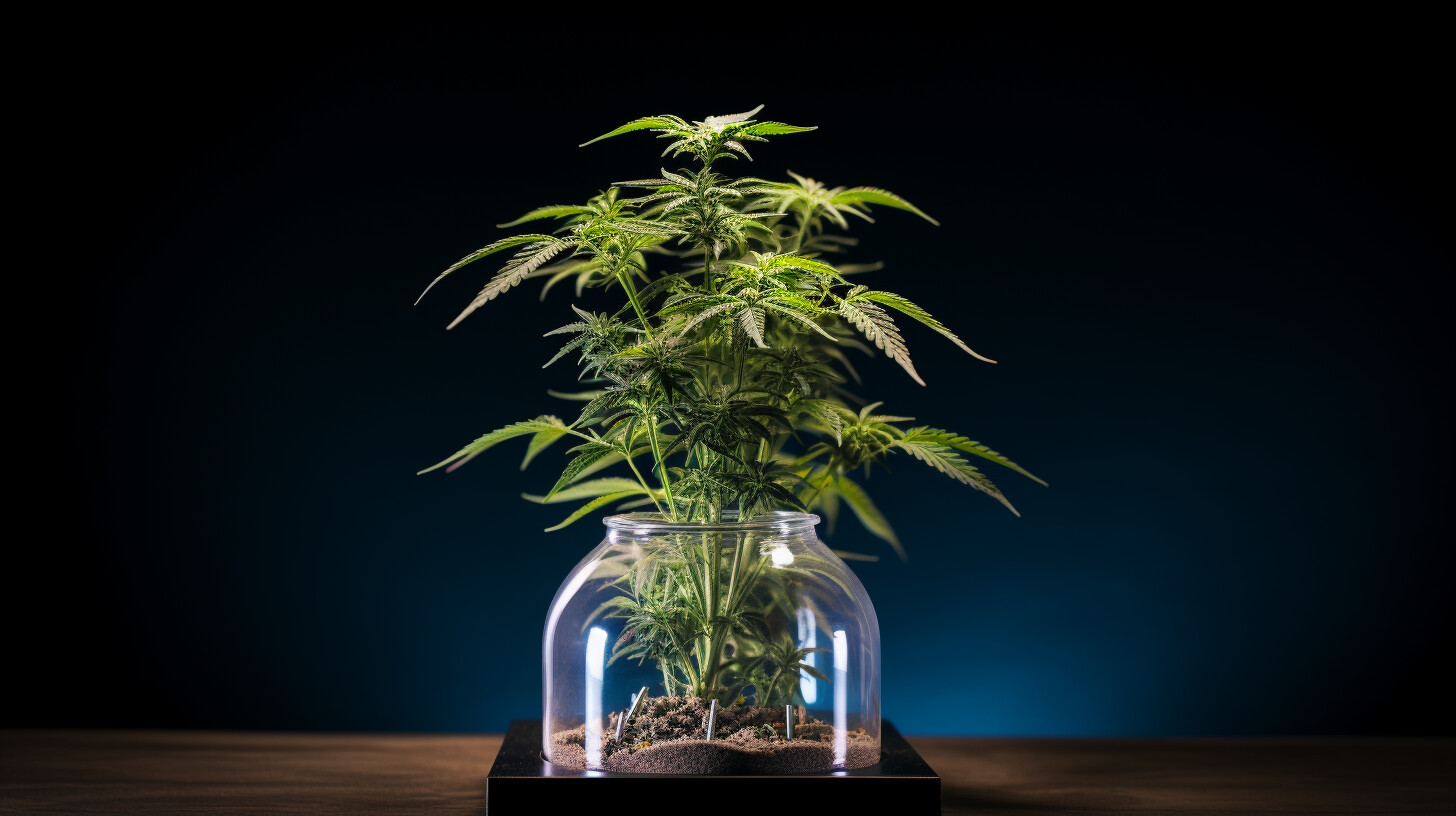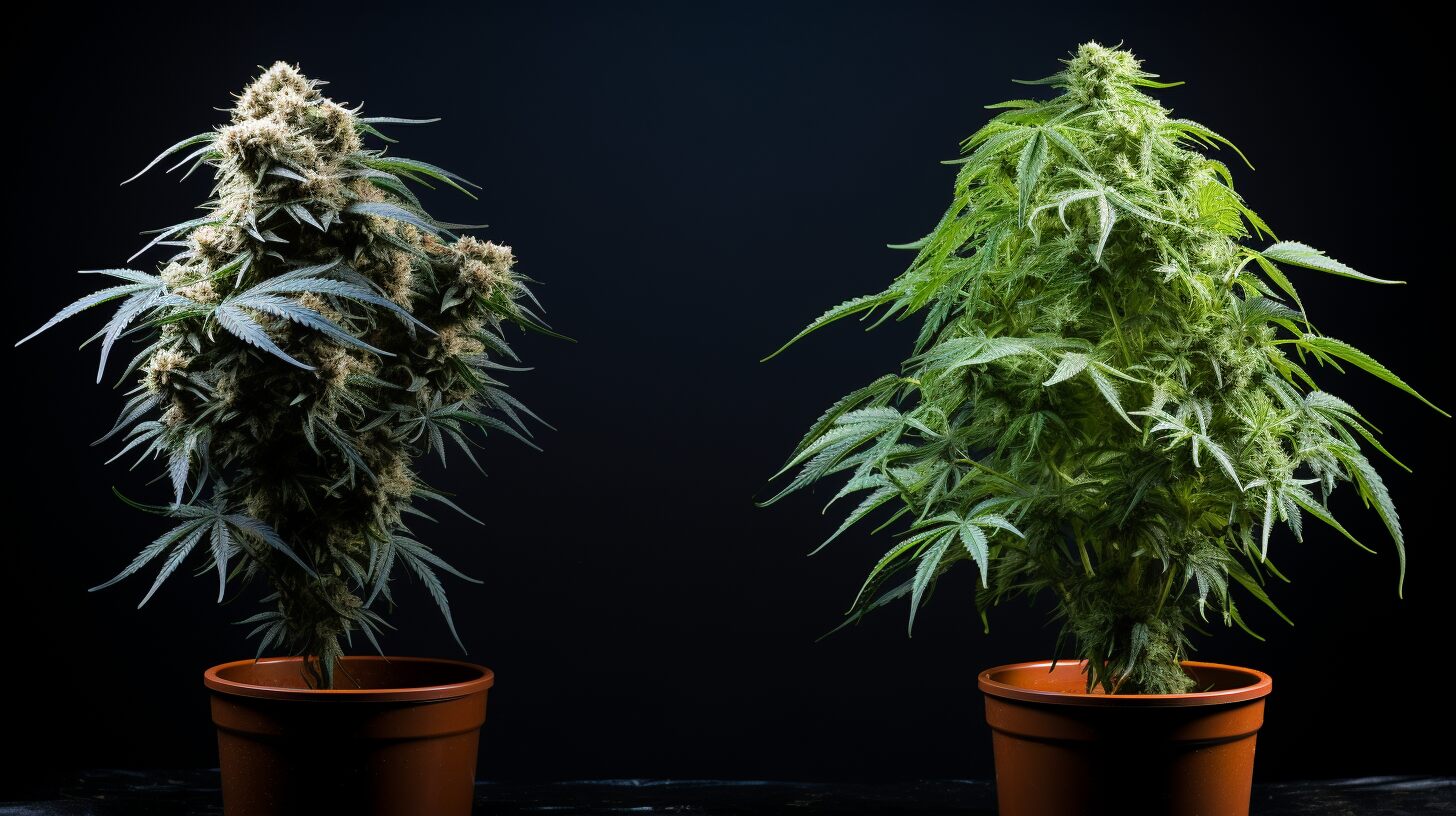What Are Autoflowering Seeds
Autoflowers have come a long way since they first appeared on the market in the early 2000s. Back then, they weren’t very potent and lacked in aroma and yield – however, in recent years, autoflowers have advanced to rival feminized photoperiod strains in terms of potency, yield, and aroma.
Not only are modern autoflowers great for recreational users due to their rich THC content, but they are also great for holistic users thanks to their low THC and high CBD makeup, offering non-psychoactive effects without as much psychoactivity.
How Are Autoflowering Plants Created?
Autoflowering strains are a relatively new development in the world of cannabis. They are created by crossbreeding indica or sativa seeds with ruderalis, resulting in cannabis plants that flower according to age instead of relying on daylight hours.
The ruderalis plant used in this process is a wild subtype that tends to be small with quite low yields, but they possess the ability to flower independently thanks to its adaptation to regions such as Northern Europe and Siberia where the summers can be short but feature many hours of sunlight.
Who Uses Automatic Cannabis Strains, and Why?
Automatic cannabis strain is gaining more attention due to their convenience and ease of use. Experienced growers appreciate them because they are quick to harvest with decent yields and perfect for growing in limited spaces and outdoor guerrilla grows. Besides the convenience they bring, they also offer smokers a great recreational experience with the right strain providing mild yet balanced effects.
Smokers find it easy to select an autoflower that suits their needs, as many varieties are flowering from Indica strains to Sativas to Hybrids. Whether users are looking for a relaxing high or an uplifting one, these autoflowers are sure to offer something unique and enjoyable.
With varying levels of THC, users can get just the intensity or relaxation they desire depending on what variety of strain they choose. The quick flowering time and robustness offered by automatic strains make them especially appealing to both growers and smokers alike.
How to Grow Autoflowering Seeds
Embarking on a journey to grow autoflowering weed seeds can be an exciting and rewarding experience. Discover the unique characteristics of these plants and learn tailored cultivation techniques to maximize yield and potency in your autoflowering garden.
Indoors vs Outdoors
Indoors is a great way to grow cannabis if you are short on space or want complete control over your environment. The advantage of growing indoors is that you can keep your plants on an 18/6 (18 hours of light, 6 hours of darkness) or 24/0 light schedule from seed to harvest, meaning no need for switching to flowering lights and dealing with a complex photoperiod timeline like with photoperiod cannabis.
This allows the grower more flexibility and results in faster turnarounds, as the growing period can be reduced by several weeks compared to photoperiods.
Outdoors is the more traditional way of cultivating cannabis although it requires a bit more know-how with regards to weather and the passage of seasons. Outdoors you have to deal with and adjust for variances like rain, wind, humidity, and temperature, and therefore more preparation may be required than when growing indoors.
That said, you are not as beholden to the natural seasons as with photoperiod plants - you can plant your autos at any time of the year so long as there is no frost present. Your harvests will also typically arrive 8–10 weeks after planting, which gives you access to quicker turnovers and multiple harvests.
How Much Time Do You Need To Grow Autoflower Seeds?
Autoflowering cannabis seeds are gaining in popularity due to their fast growth cycles and high yields. These strains are much easier to grow than traditional cannabis plants and require less time and effort. On average, autoflower plants will be ready to harvest in just 10 weeks after the germination process.
Some strains may even be ready for harvest as quickly as 8 weeks after the marijuana seeds were planted. This makes it a great option for novice growers who don’t have much experience with cultivating their cannabis flower.
Can You Grow Feminized Photoperiod And Autoflowers in The Same Grow Room?
Yes, it is possible to grow feminized photoperiod and autoflowering cannabis in the same grow room. However, it generally isn't the optimal way of growing them together. One major issue is that the two varieties have varying sizes.
Autoflowers tend to be significantly smaller than photoperiod plants, meaning you will need extra space for the taller plants, or you may need to manage their growth more closely. Another potential problem when growing them together is light cycle management.
Most autoflowering varieties require 18-20 hours of light each day for optimal growth and yields, whereas photoperiod plants need 12 hours of light followed by 12 hours of darkness when it's time to flower them. Switching your lights from 18/6 to 12/12 means that your autos will get less than their recommended amount of light, resulting in smaller yields.
Optimal Temperature And Humidity For Growing Autoflowers
Optimal temperatures for growing autoflowers are an important factor if you want to ensure your plants are healthy. Autoflowers are particularly sensitive to extreme temperatures, so the ideal temperature range for them to grow in is 21°C (room temperature).
If your grow room's temperature gets too cold or too hot, it can lead to decreased yield and poor growth. To prevent any issues concerning temperature, one should get a grow room setup that allows full control of the environment. This includes having a quality ventilation system and also using heating/cooling systems if necessary.
What Kind of Nutrients Do Autoflowers Need?
Autoflowers are a type of cannabis plant that produces buds without the need for regular light cycles like traditional photoperiod weed. Autoflower plants typically stay small, so they don't need as much nutrients as larger plants. The key to successful autoflowering is to make sure you give your plant just the right amount of nutrients and not overfeed.
When it comes to fertilizer for autoflowers, you should use less than the recommended dose when using commercial cannabis nutrients. For instance, instead of the full recommended dosage, go with only ½ or ¼ of it to ensure that your plant has all it needs while avoiding giving too much nutrients which can cause damage.
If you're using a pre-fertilized potting mix then you may not need to feed your autoflowers until after 3 or 4 weeks when they start flowering. This way, you can make sure your plants get just enough food to help them thrive and bloom healthily.
What Kind of Water for Autoflowers?
Autoflowers are smaller than their feminized photoperiod predecessors and consequently require less water to thrive. To ensure the success of your autoflower crop, allow the soil to dry up between waterings. This discourages root rot, fungal issues, and over-saturation of nutrients. Autoflower plants should also not be overwatered, as this can cause stress for the plant and lead to poor yields.
When watering autoflowers with a nutrient solution, it is important to adjust the pH level of the solution. Generally speaking, the optimal pH level for autoflower crops is 6–7 when grown in soil-based systems.
There are several products like natural pH “up” or “down” that can help you get your water/nutrient solution to a balanced level for optimal growth and health for your autoflower crop. The right combination of water quantity and quality will help ensure that your autoflowers grow optimally and yield plentiful, high-quality harvests.
What About Plant Training With Autoflowering Cannabis?
Autoflowering cannabis plants may be an attractive option for outdoor growers who wish to avoid the hassle of controlling light cycles associated with photoperiod strains.
Unfortunately, some traditional plant training techniques are not suitable for autoflowers because they can cause a temporary slow down in growth or even complete halting due to the limited lifespan of these popular strains. Techniques such as topping, FIM, super cropping, and defoliation should be avoided as they will have a dramatic effect on your yields.
Low-stress training (LST) is the best method to opt for when training autoflowers. This technique does not involve any cutting or pinching so there is no risk of stunting growth. LST simply involves bending down stems and branches to create an even canopy that optimizes light exposure.
This approach still works wonders as far as creating heavy yields without risking much damage to the plant itself but it must be done carefully over time to get it right without slowing down the plant’s growth rate.
Advantages and Disadvantages of Autoflowering Seeds Advantages
Auto-flowering seeds have revolutionized the world of cannabis cultivation, offering a range of advantages and disadvantages to beginner growers.
Advantages of Autoflower Weed Seeds
Autoflowering marijuana seeds offer a host of advantages that make them an attractive choice for indoor growers. For starters, autoflowers require less maintenance than regular plants and can reach harvest time in as little as 8-10 weeks, making them ideal for those with limited space or time.
Autoflower plants also tend to be more resilient than traditional varieties and are better able to withstand temperature fluctuations, disease pressure, and pests. Additionally, autoflower strains often produce higher levels of THC than other varieties, making them a great choice for those looking to maximize potency.
Lastly, autoflowers are generally smaller and more compact than traditional cannabis plants, meaning they take up less space in the grow room or garden. All in all, those who choose to grow autoflowers can enjoy a quick turnaround time and a bountiful harvest with minimal effort.
Disadvantages of Autoflower Marijuana Seeds
Despite the numerous advantages of autoflower cannabis seeds, there are a few drawbacks to consider before planting. Autoflowers tend to be less potent than traditional strains, with lower levels of THC and CBD in the final product.
Additionally, autoflower plants are smaller than traditional varieties, meaning yields may not be as large for those hoping for a big harvest. Furthermore, because autoflowers have a short life cycle and require minimal maintenance, some growers find that they lack the complexity and challenge of growing regular cannabis plants.
Finally, while they are generally more resilient to environmental stresses such as temperature fluctuations and disease pressure, autoflowers can still be susceptible to pests and other issues that may require additional attention.
Conclusion
Harvesting autoflowering cannabis is relatively simple. When the buds look ready, you can begin harvesting. It’s important to note that it’s best to harvest in the early morning when the trichomes are most visible and at their peak potency.
Once harvested, hang your plants upside down for a few days to dry. Then, after drying, you can store your buds in airtight containers for up to 6 months for maximum preservation of taste and potency. With the right care and maintenance, you should have a great yield of autoflowering cannabis!


 Français
Français 


